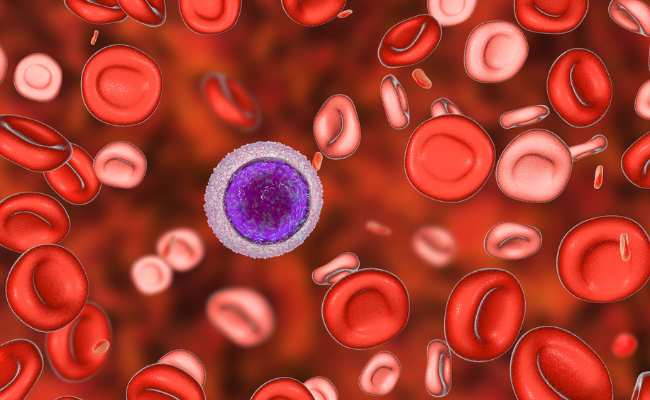How to Treat Acute Myeloid Leukaemia?
- February 01, 2024
- No Comments

What is Acute Myeloid Leukaemia (AML)?
Acute Myeloid Leukaemia (AML) stands as a rare and aggressive form of blood cancer that impacts the bone marrow and blood cells. This malignancy is characterized by the rapid proliferation of abnormal white blood cells, disrupting the normal production of blood cells. AML poses a life-threatening condition, necessitating immediate and efficacious intervention.
While it typically manifests in individuals aged 60 and older, it can also affect younger adults and children. The mutation of specific genes or chromosomes triggers the onset of AML. Despite its severity, advances in treatments are offering hope for extended survival rates, providing individuals diagnosed with AML the prospect of living longer with this challenging condition.
Why is Treating AML Important?
Treating AML is crucial due to its aggressive nature and potential to spread rapidly. If left untreated, AML can lead to severe complications, including organ failure and an increased risk of infections. Additionally, AML can affect the normal functioning of the bone marrow, leading to a shortage of red blood cells, white blood cells, and platelets. Timely intervention is essential to manage symptoms, prevent complications, and improve the chances of a successful recovery.
How is AML Treated?
The treatment of AML typically involves a combination of chemotherapy, targeted therapy, and in some cases, stem cell transplantation. The approach may vary based on factors such as the patient's age, overall health, and specific genetic characteristics of the leukemia cells.
- Chemotherapy: Chemotherapy is a standard treatment for AML and involves the use of drugs to kill or control the abnormal cells. These drugs can be administered orally or intravenously and work by targeting rapidly dividing cells, including cancer cells. Chemotherapy is often given in cycles, with periods of treatment followed by rest to allow the body to recover.
- Targeted Therapy: Targeted therapy focuses on specific molecules involved in the growth and survival of cancer cells. Unlike chemotherapy, which affects both healthy and cancerous cells, targeted therapy aims to minimize damage to normal cells. For AML, targeted therapies may include drugs that target specific proteins or mutations present in leukemia cells. These therapies can be used alone or in combination with chemotherapy.
- Stem Cell Transplantation: In some cases, a stem cell transplant may be recommended for AML treatment. This procedure involves replacing damaged or diseased bone marrow with healthy stem cells, which can develop into new, normal blood cells. The stem cells can be obtained from the patient (autologous transplant) or a compatible donor (allogeneic transplant). Stem cell transplantation is typically considered for individuals with high-risk AML or those who have experienced a relapse after initial treatment.
Treatment Solutions for AML:
- Chemotherapy Combinations: Various chemotherapy drugs are used in combinations to increase effectiveness and reduce the risk of resistance. Commonly used drugs include cytarabine, daunorubicin, idarubicin, and mitoxantrone. Tailoring the chemotherapy regimen based on the patient's specific characteristics and response to initial treatment is crucial for optimizing outcomes.
- Targeted Therapies: Drugs such as Midostaurin and Gilteritinib target specific mutations in leukemia cells, disrupting their growth and survival. Ivosidenib and Enasidenib are inhibitors of mutated IDH1 and IDH2 enzymes, respectively, offering targeted therapy for patients with these specific genetic mutations.
- Stem Cell Transplantation: Allogeneic stem cell transplantation can provide a curative option for some patients, especially those at high risk or with recurrent AML. Identifying a suitable donor match and managing potential complications post-transplant are critical factors for success.
Benefits of AML Treatment:
- Improved Survival Rates: Early and effective treatment significantly improves the chances of survival for individuals diagnosed with AML. Targeted therapies and advancements in stem cell transplantation techniques contribute to enhanced outcomes.
- Symptom Management: Treatment helps alleviate symptoms associated with AML, such as fatigue, infections, and bleeding tendencies. Improved blood cell production contributes to better overall health and quality of life for patients undergoing treatment.
- Reduced Risk of Complications: Timely intervention reduces the risk of complications, such as organ failure and severe infections, associated with untreated AML. Targeted therapies aim to minimize damage to normal cells, improving the overall safety profile of treatment.
- Potential for Cure: Aggressive treatment approaches, including stem cell transplantation, offer the potential for a cure in certain cases of AML. Advances in personalized medicine enable a more tailored and effective treatment strategy based on the individual characteristics of the leukemia cells.
Comments (0)